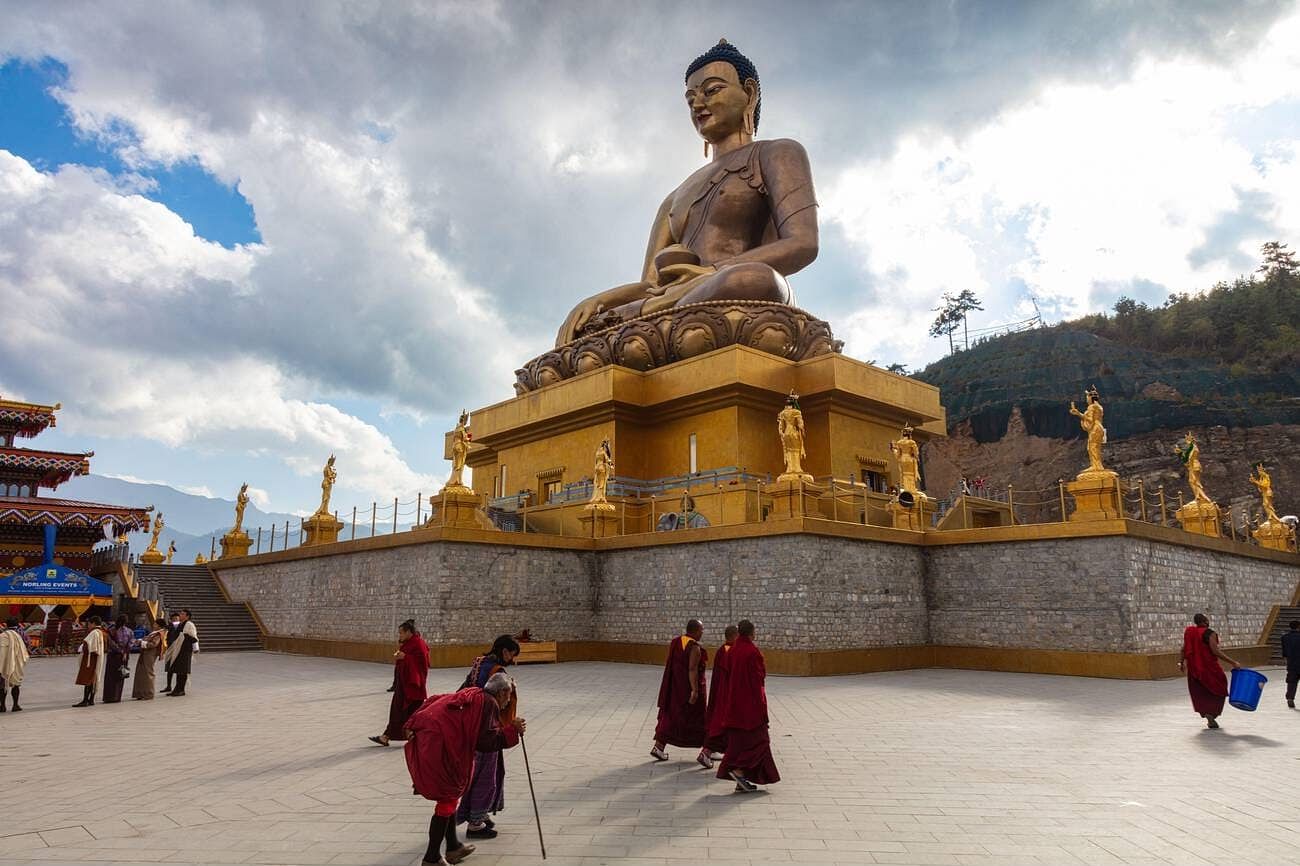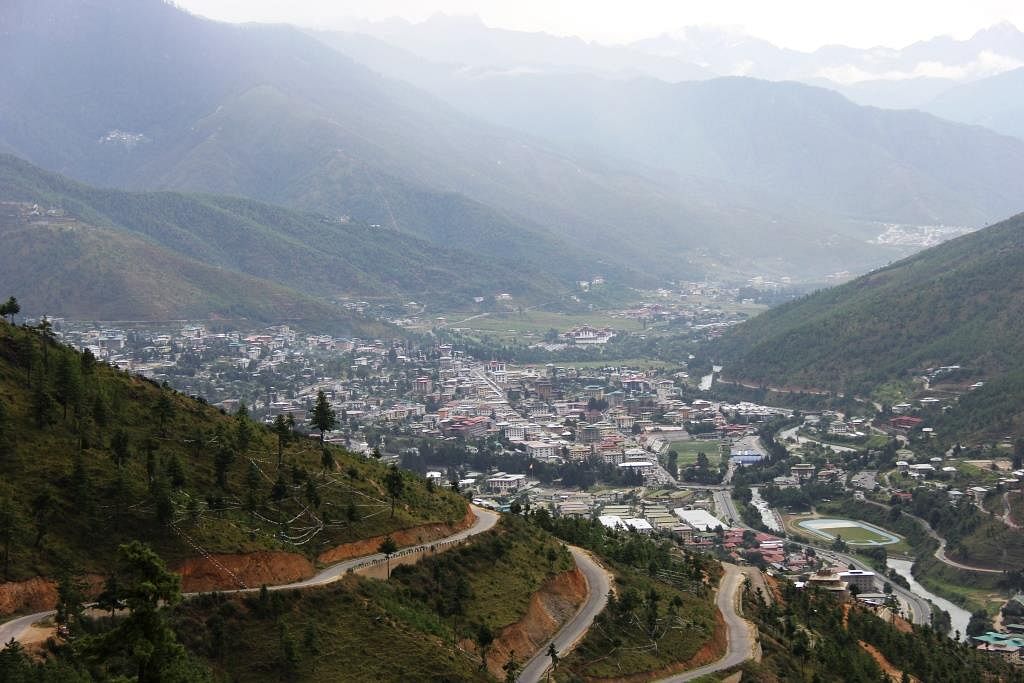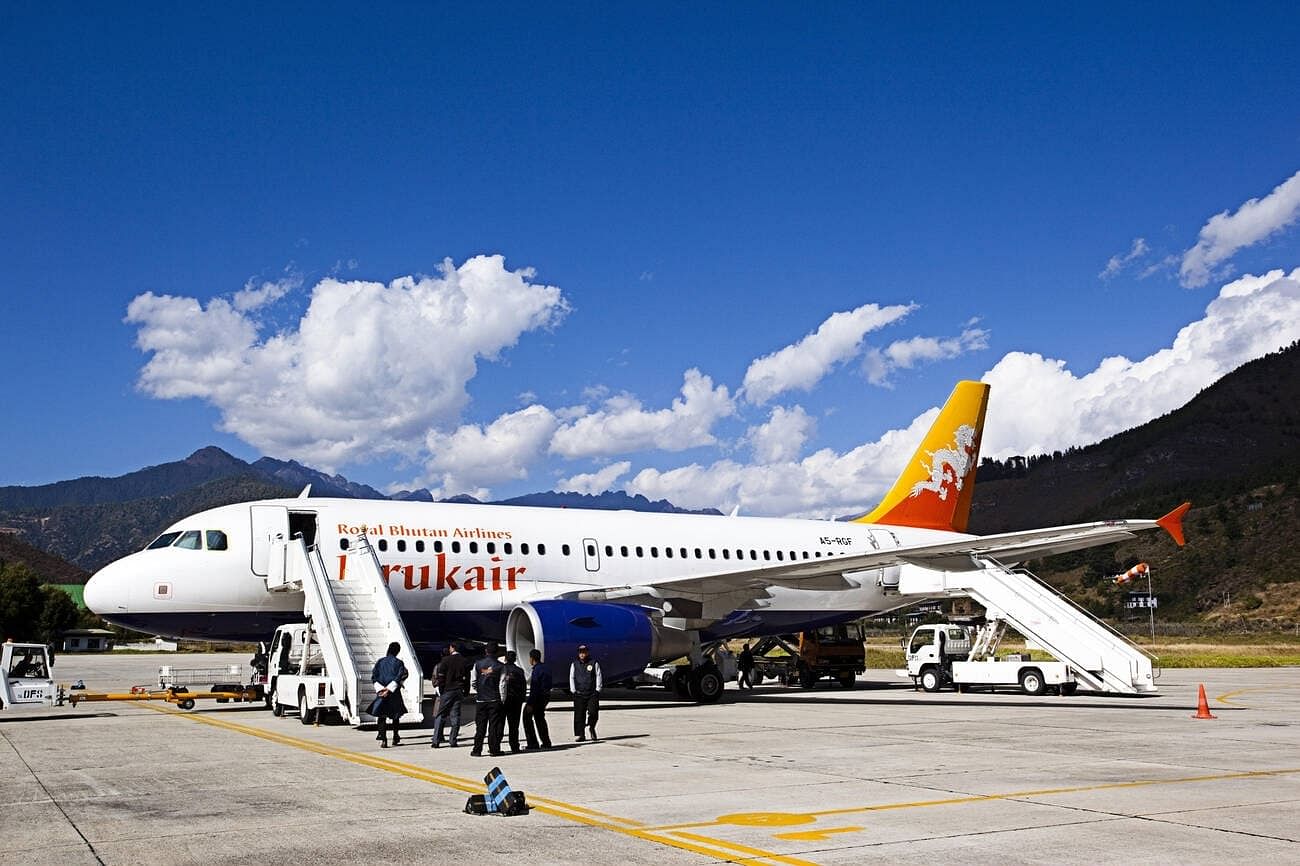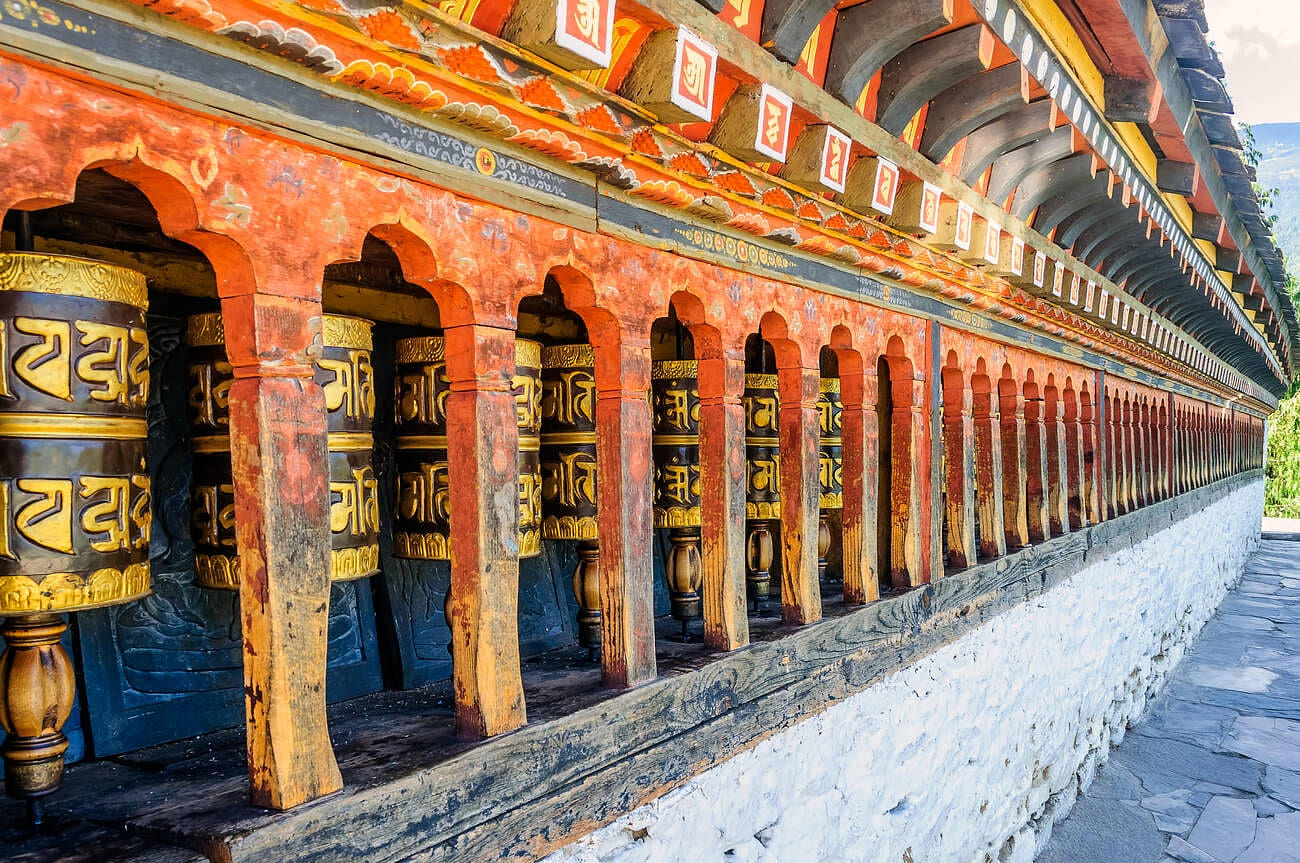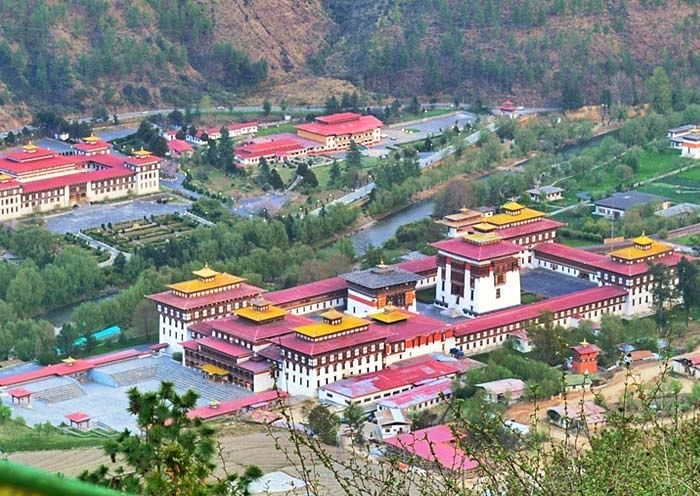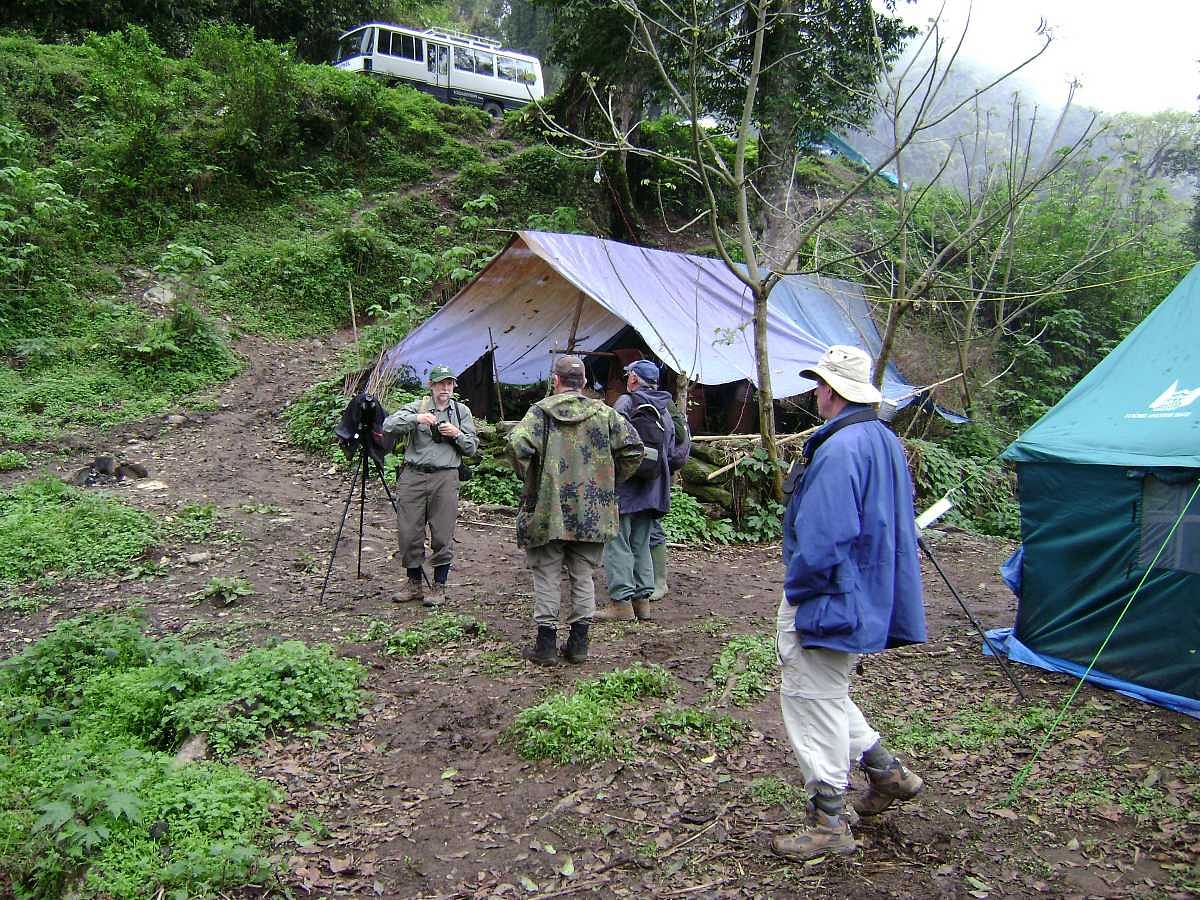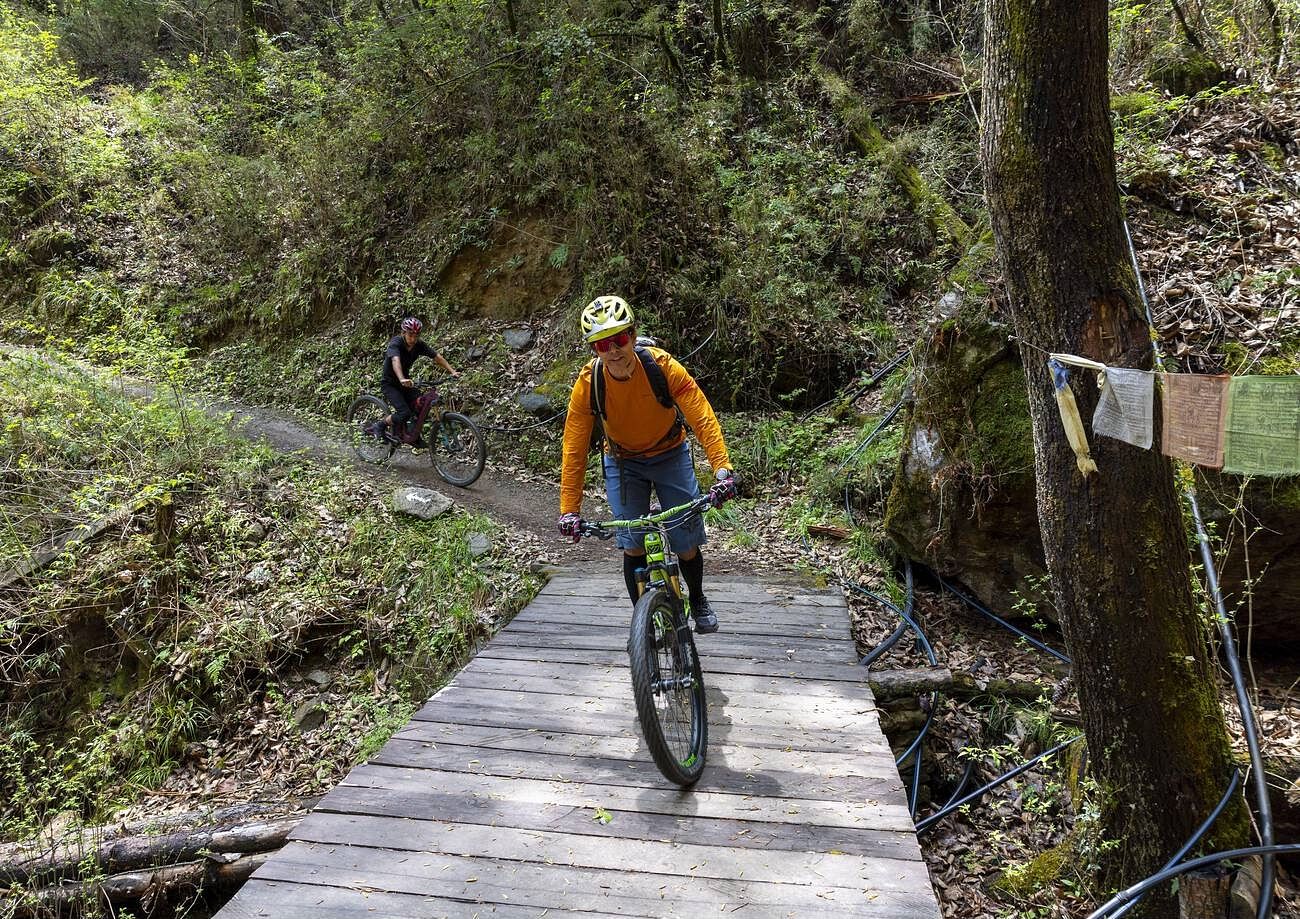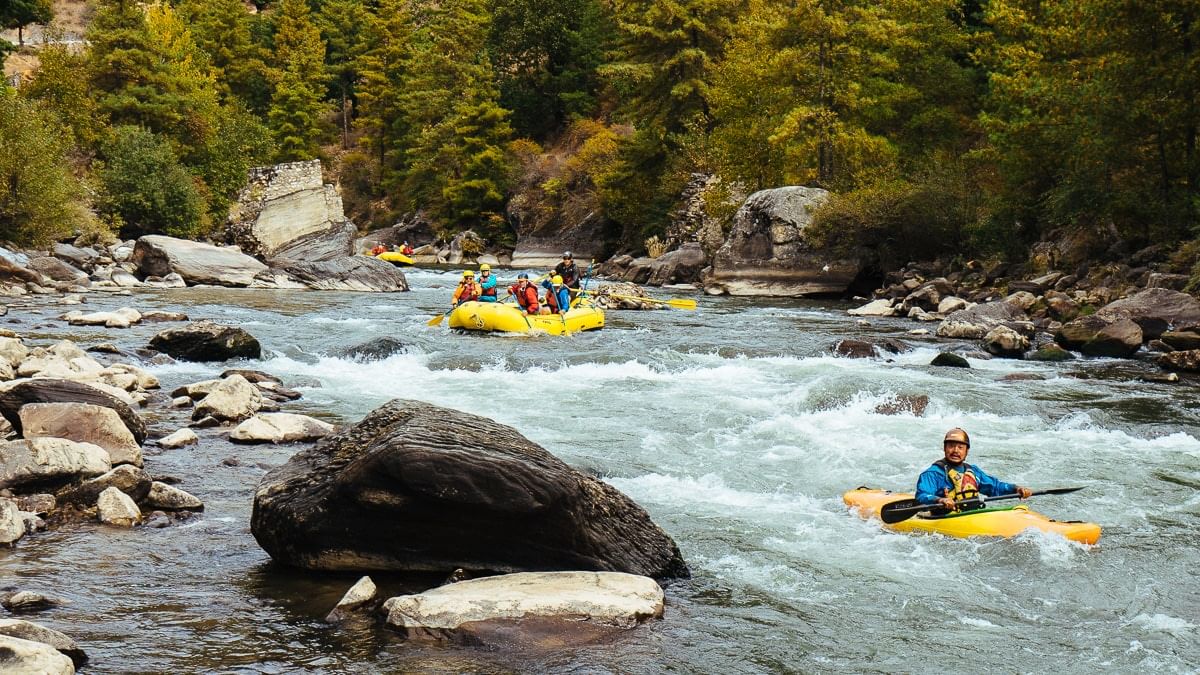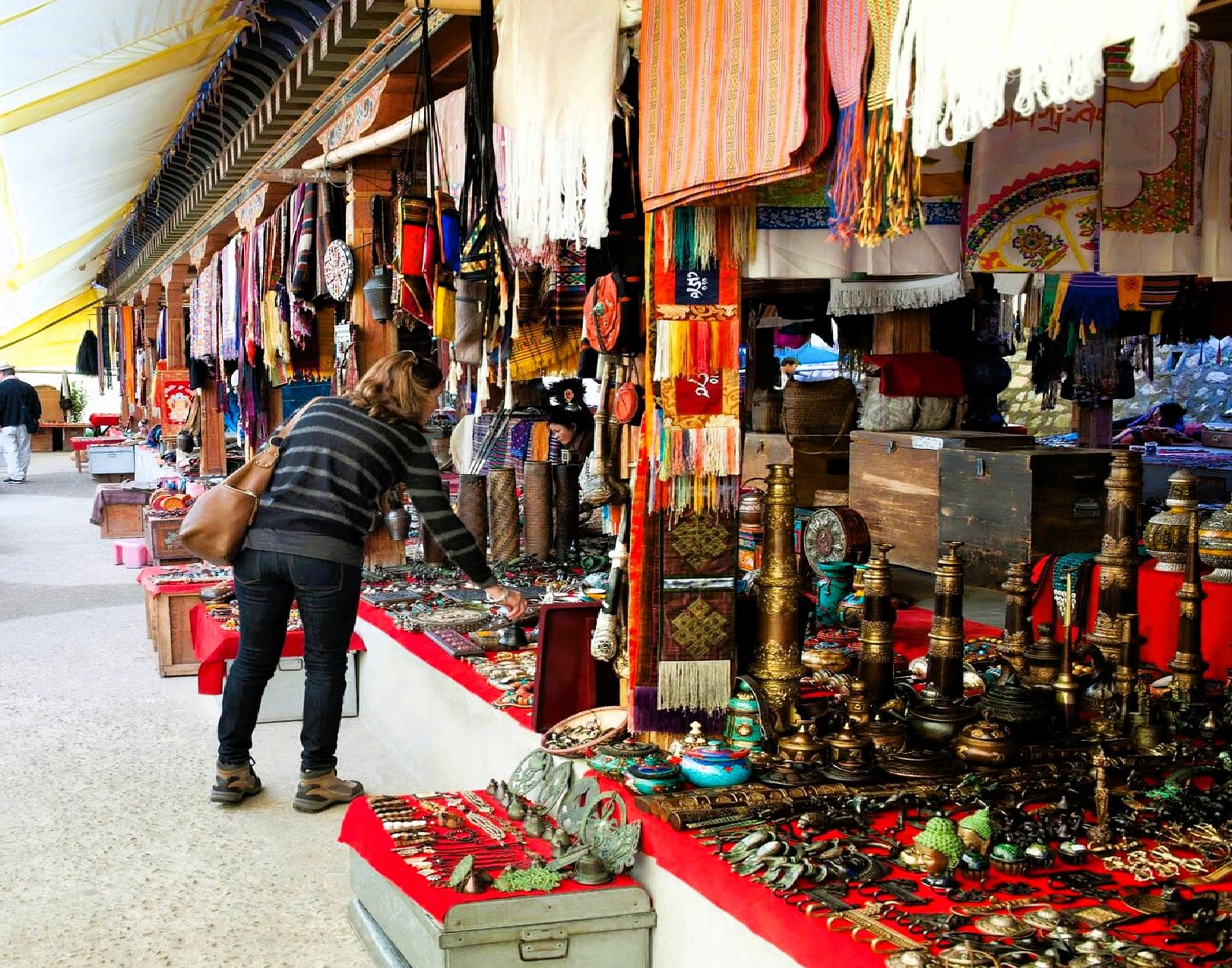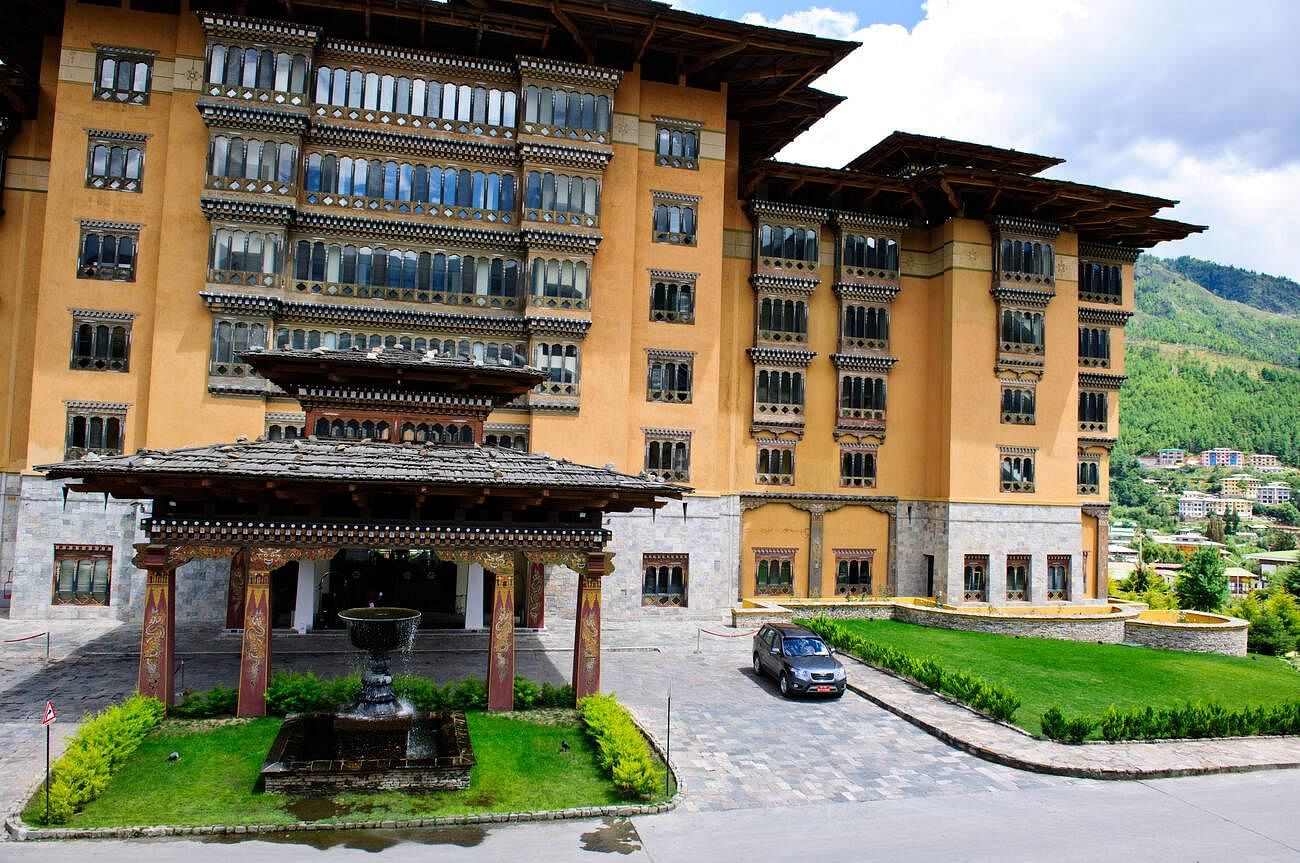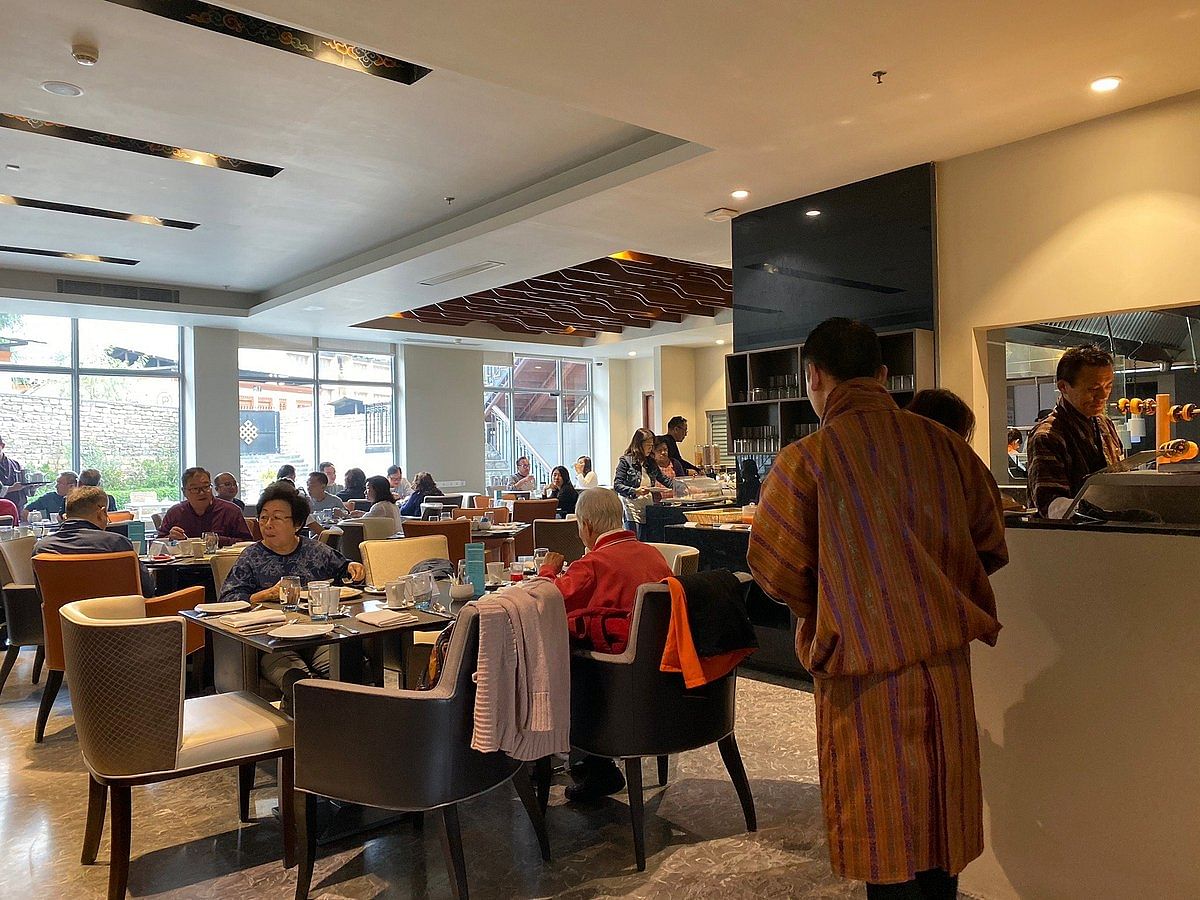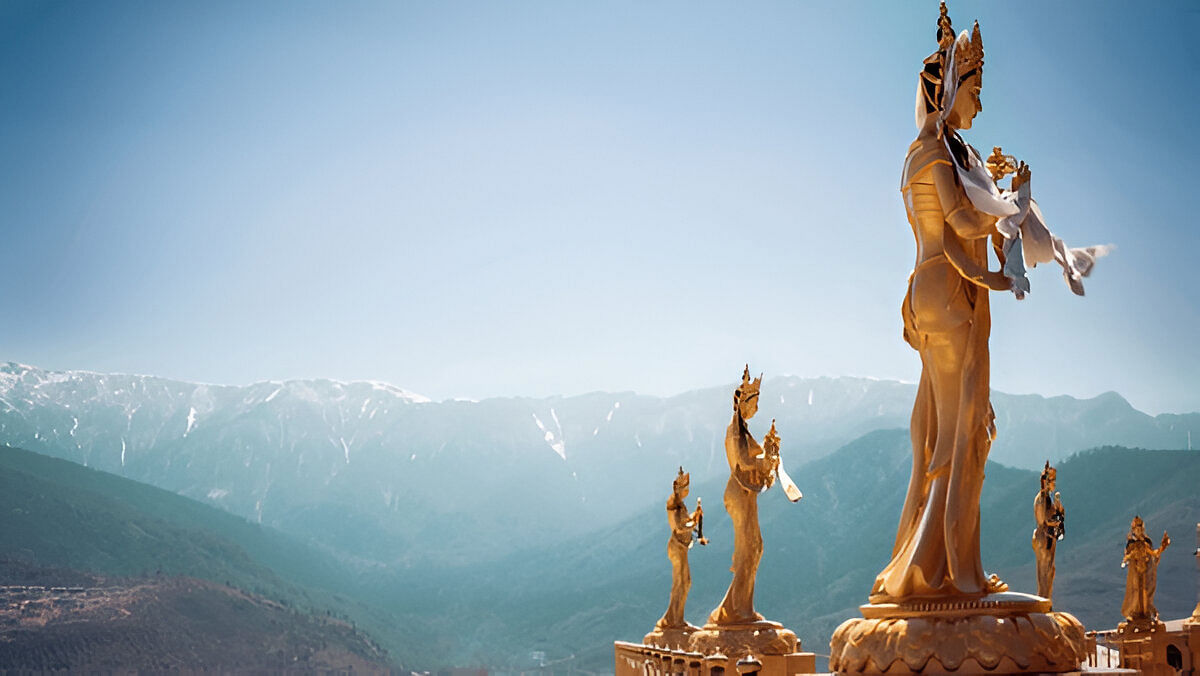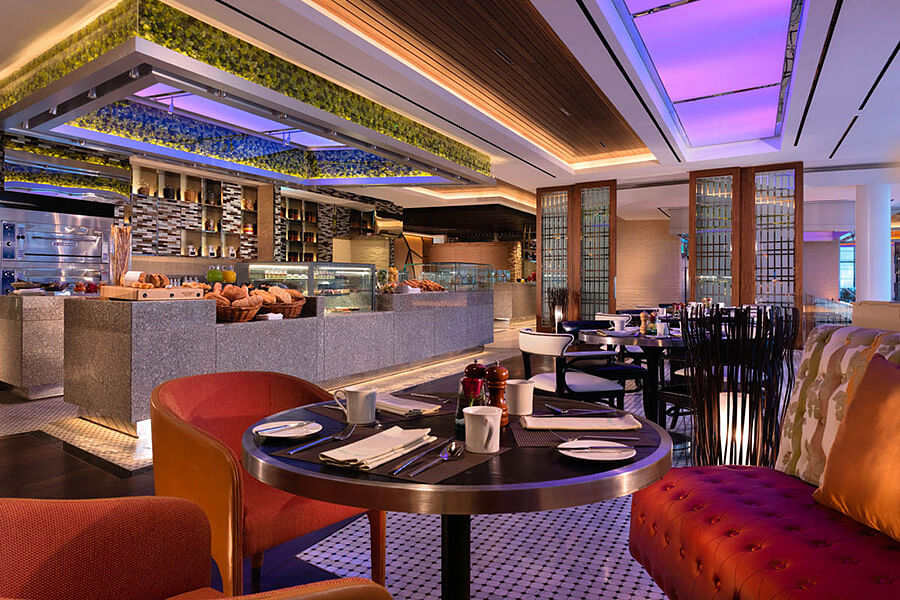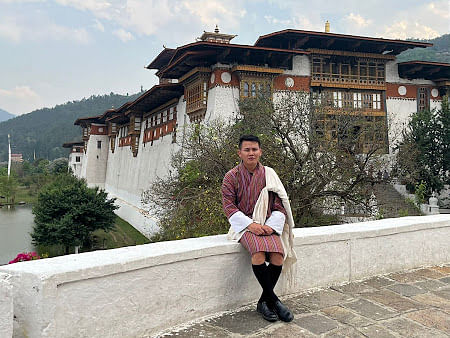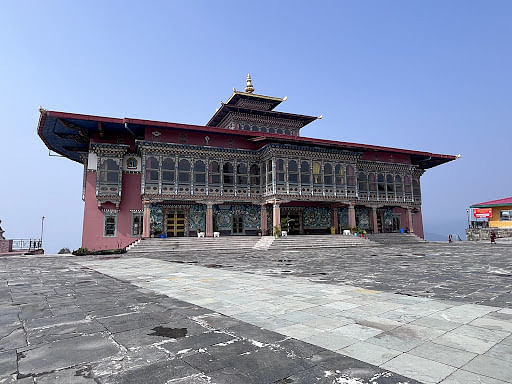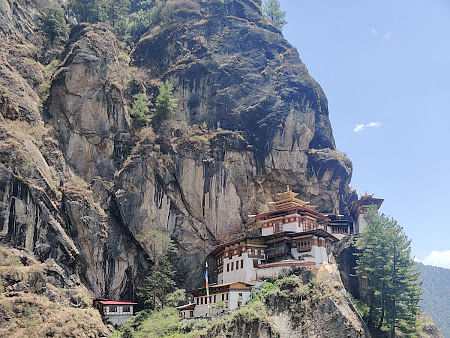What kind of capital city has zero traffic lights? Thimphu in Bhutan breaks every rule you know about capital cities. No traffic lights anywhere - just cops standing in the middle of roads waving their arms around. Sounds chaotic, but it works.
This is located high up in the mountains where your lungs are pumping overtime just to walk uphill. You'll see the weirdest combinations everywhere. Monks are scrolling through Facebook while ancient-looking government buildings house people doing regular desk jobs.
Everything here mixes in ways that shouldn't work but do. Ancient stuff right next to modern life, no planning involved. Just happens naturally. Planning a trip to experience all this? Our Bhutan Tour Packages help you navigate this unique mountain capital without missing the good stuff.
Best Time to Visit Thimphu
The best time to visit Thimphu is either in spring (March to May) or autumn (September to November).
- Spring brings fresh blossoms, green hills, and pleasant temperatures.
- Autumn is festival season, especially the famous Thimphu Tshechu, and the skies are usually clear for photography and sightseeing.
If you enjoy cold weather and fewer crowds, winter (December to February) is also nice, though chilly. However, monsoon months (June to August) bring rain and fog, which may affect travel plans.
So, the best time to visit Thimphu depends on your preferences, but spring and autumn are top picks.
There is no airport in Thimphu. The nearest airport is in Paro, about 50 km away. So, how to reach Thimphu? Simply fly into Paro International Airport and take a taxi or private car to Thimphu.
Option 1: Fly via Paro International Airport & Road to Thimphu
- Flight: Book a flight to Paro International Airport, the only international airport in Bhutan. Airlines like Druk Air and Bhutan Airlines offer direct flights from Indian cities such as Delhi, Kolkata, Guwahati, and Bagdogra.
- Taxi from Paro Airport to Thimphu:
- Shared or small taxi: approximately ₹1,000 INR (Nu 1,000)
- Depending on negotiation, rates may range between ₹800–₹1,200 INR
- Bus option: Government-run Dhug Transport buses run twice daily from Paro to Thimphu, costing 200 INR, which is equivalent to ₹1,200–1,400 INR.
Option 2: Overland via Phuentsholing Border Entry (from India)
- Entry by road: Travellers from West Bengal or northeastern India can enter Bhutan via Phuentsholing, accessible from Jaigaon (border town).
- Taxi from Phuentsholing to Thimphu:
- Shared taxi per person: around INR 800–1,000.
- Bus option: Government buses (Bhutan Post) run between Phuentsholing and Thimphu 2–3 times a week, costing around ₹500 INR per passenger.
Option 3: Train + Road via Indian Railhead
- Train to Hasimara or New Jalpaiguri (Siliguri) from major Indian cities like Kolkata or Delhi.
- From there, take a taxi or bus to Jaigaon–Phuentsholing, and then onward to Thimphu via road.
- Cost breakdown:
- Taxi from Hasimara/New Jalpaiguri to Phuentsholing: typically ₹4,000–5,000 INR (one way).
- Then add approximately ₹5,000–6,500 INR taxi or ₹500 bus for Phuentsholing–Thimphu.
Thimphu Height from Sea Level – Why It Matters
The Thimphu height from sea level affects both the weather and how you feel. The high altitude means cool days and colder nights. Some people feel a bit tired for the first day or two, but drinking water and taking it easy helps.
Because of the altitude, the skies are often clear, which is perfect for photography and sightseeing.
Places to Visit in Thimphu That Matter
Skip the generic sightseeing checklist mentality here. The places to visit in Thimphu aren't just pretty buildings to photograph - they're windows into how this culture has managed to stay authentic while the rest of the world goes crazy.
1. Tashichho Dzong: Tashichho Dzong is this massive white fortress that serves as both a monastery and the seat of government. Think about that for a second - the same building where monks meditate is where the country's political decisions get made. During summer, hundreds of monks live here, and you can hear their evening chanting echo across the valley. It's not a tourist show - it's their actual daily practice.
2. Buddha Dordenma: Buddha Dordenma is a giant golden statue that you can see from anywhere in the valley. At 169 feet tall, it's hard to miss. But don't just drive up, take your photo, and leave. Go at sunset when the whole city spreads out below you. Inside the statue, thousands of smaller Buddha images create this amazing kaleidoscope effect, making it one of the best places to visit in Thimphu.
3. Memorial Chorten: Memorial Chorten might look like just another temple, but hang around for a while and you'll see it's actually the social heart of the city. Every morning and evening, hundreds of people circle this white stupa, spinning prayer wheels and chanting quietly. Old women in traditional dress walk alongside young professionals still in their work clothes. Nobody's putting on a show - this is just what they do.
4. Weekend Market: The Weekend Market transforms the riverbank into complete chaos every Friday and Saturday. Vendors spread their goods on tarps - chillies so red they practically glow, yak cheese that smells like nothing you've ever encountered, and handwoven textiles in patterns that have been passed down for generations. This isn't set up for tourists, though plenty visit. It's where locals do their actual grocery shopping.
Things to Do in Thimphu When You Want Real Experiences
Forget about checking off a list of Thimphu tourist attractions in one day. The real things to do in Thimphu happen when you slow down and let the city show you its personality. This place rewards patience, not efficiency.
- Start your mornings at Coronation Park, where locals gather for exercises. You'll see everything from traditional martial arts to aerobics classes happening as the sun comes up over the mountains. Join in if you want - people here are incredibly welcoming to visitors who show genuine interest instead of just snapping photos.
- Spend real time at the Centenary Farmers Market during weekdays when it's less crowded. Talk to the vendors about their products. Try the ema datshi (chillies with cheese), which is basically the national dish. Most vendors speak some English and genuinely enjoy explaining their goods to curious visitors.
- Take a cooking class with a local family. Several families in Thimphu open their homes to teach visitors traditional cooking techniques. You'll learn about ingredients you've never heard of, and cooking methods that have been used for centuries, and probably eat the best meal of your entire trip. Plus, you get to see how people actually live instead of just tourist-facing stuff.
- Hike to Tango Monastery: Tango Monastery is a great place to escape the city for a few hours. The trail winds through blue pine forests and rhododendron groves. The monastery itself is small but has an incredible atmosphere, and the monks are usually happy to chat with visitors who show respect for their traditions.
- Archery is Bhutan: If you're lucky enough to be in town during archery competitions, drop everything and go watch. Archery is Bhutan's national sport, and these events are serious business mixed with serious fun. Teams dress in traditional clothing, and there's as much celebrating and good-natured trash talk as there is actual archery. It's competitive but also completely joyful.
Adventure Activities in Thimphu
While it’s not an adventure hub, there are light adventure activities in Thimphu for those who love nature.
1. Hiking & Villages Trails
Do you enjoy the stillness of a forest or the smell of pine trees? From Thimphu, you can embark on short but magical hikes to places like Dochula Pass and the Royal Botanical Park at Lamperi. These day trips offer refreshing mountain air and the chance to spot wildflowers and forest birds-one of the best things to do in Thimphu when you want adventure that’s low effort but high reward.
2. Mountain Biking
Rent a bike for the day and explore low-traffic roads or dirt paths around town. Whether you're crawling beside the Wang Chhu river or pedalling uphill toward nearby villages, mountain biking in Thimphu opens up a quieter side of the city. It’s both active and immersive-a must-try among adventure activities in Thimphu. A typical bike rental day costs around ₹2,000–₹4,000 INR if arranged locally, and trails suit all levels, from novice to expert cyclists.
3. Rock Climbing
Just outside the city, there's a granite wall locals call “The Nose.” Even if you’ve never climbed before, it's friendly enough for beginners, or challenging enough if you're more experienced. You get gear and guidance included, and after reaching the top, you’ll enjoy sweeping views of the hills. One of the more memorable things to do in Thimphu. Costs are around ₹1,500–₹3,000 INR per session, including gear and guide. This is one of the top things to do in Thimphu for adrenaline fans.
4. White‑Water Rafting & Kayaking
If you’re up for river action, Mo Chhu and Pho Chhu (Bhutan’s “Mother” and “Father” rivers) host easy to moderate rafting or kayaking. The rapids are mellow but exciting, set against green walls. It’s not right in town-expect a short drive-but once you’re out there, it’s peaceful and thrilling in terms only nature can offer. Expect a 2–3 hour session, usually costing ₹7,000–₹10,000 INR (approx. $100–150 USD).
5. Archery
Archery is the national sport here in Thimphu Bhutan, and there's nothing quite like picking up a bow to try it yourself. Head to the Changlimithang Ground-you’ll be taught basics, given a chance to shoot at bamboo targets, and might even bump into a local competition or practice. It feels hands-on and fun, and lets you join in a deeply held tradition.
6. Trail Running & Mindful Adventure
Combine your cardio with contemplation by running uphill toward temples like Wangditse or Dodeydrak. The city quiets behind you, fresh air surrounds you-and spiritual peace meets physical endurance. This type of mindful trekking is becoming a favourite adventure activity in Thimphu Bhutan, for visitors who like a mix of meditation and motion.
Shopping in Thimphu is a relaxing and colourful experience. The capital of Bhutan might not have huge malls or flashy markets, but it offers a charming local touch. If you love exploring local art, handmade items, and traditional crafts, Thimphu Bhutan won’t disappoint.
- Weekend Market: Weekend Market remains the most authentic shopping experience, hands down. Vendors sell everything from fresh produce to handwoven textiles to traditional medicines. The dried yak cheese is worth trying even if it's not to your taste - it's a unique flavour that you won't experience anywhere else. The chillies range from mild to face-meltingly hot, and vendors are usually happy to let you sample before buying.
- Craft Bazaar: Craft Bazaar along Norzin Lam (the main street) offers more tourist-friendly shopping in Bhutan with fixed prices and English-speaking vendors. You'll find traditional textiles, wooden crafts, jewellery, and religious items. Quality varies a lot, so it's worth comparing prices and craftsmanship between different stalls before making any big purchases.
- National Handicrafts Emporium: The National Handicrafts Emporium provides government-certified authentic crafts at fixed prices. This is where to buy items when you want to be sure they're genuinely made in Bhutan rather than imported from somewhere else and marked up. Prices are higher than at markets, but quality is guaranteed.
- Local bookshops like Kuensel Corporation and Joen Bookstore stock books about Bhutan that make excellent souvenirs. Many are written by local authors and offer perspectives on Bhutanese culture, history, and politics that you simply won't find elsewhere.
For everyday shopping, locals use the various grocery stores and supermarkets scattered throughout the city. These aren't tourist destinations, but they offer real glimpses into daily life and sell local products that make interesting gifts if you're looking for something different.
There are many hotels in Thimphu, ranging from budget-friendly stays to luxury options.
- Le Méridien Thimphu: Le Méridien Thimphu is centrally located. This 5-star hotel features elegant rooms, a spa, a fitness centre, an indoor pool, and fine dining. Ideal for those who want luxury and convenience in one bundle. Rates hover around ₹21,000–25,000 per night.
- Taj Tashi: Taj Tashi is Bhutan’s first-ever 5-star hotel with traditional Dzong architecture, multiple restaurants, a spa, and meeting facilities-perfect for longer stays or honeymooners.
- Six Senses Thimphu & Terma Linca Resort & Spa: Stylish escapes offering wellness experiences, riverside views, and services like spa, cycling, and yoga. Expect ₹16,000–35,000 per night.
- Druk Hotel: Located near Clock Tower Square, it combines clean, spacious rooms with Bhutanese décor and helpful service. Typically around ₹16,000–24,000 per night.
- Hotel Osel: Comfortable and well-located with scenic rooftop views, easy access to local sights, and family-friendly amenities. ₹6,600–8,000 per night.
- Gakyil Thimphu: Affordable comfort with traditional interiors, good location, and steady service-about ₹5,500–6,000 per night
- Namseling Boutique Hotel: Stylish mid-range gem with well-appointed rooms, complimentary breakfast, taxi assistance, and a warm host vibe. Rates from ₹4,400 per night.
- Hotel Norbuling: Central location near markets, clean and simple rooms, with helpful staff and easy access to shops and eateries. Typically ₹4,400–4,500 per night.
- Hotel Shantideva, City Hotel Thimphu, Hotel Wangchuck: Great options for budget travellers-basic comforts, friendly service, rooms in the ₹2,100–6,600 range. Enjoy simple stays close to Thimphu’s core.
Food in Thimphu is simple, warm, and made with love. The flavours are earthy and often spicy.
- Ema Datshi – a spicy dish of chillies and cheese, eaten daily by locals
- Red rice – grown in Bhutan, slightly nutty and healthy
- Phaksha Paa – pork cooked with chillies and radish
- Suja (Butter Tea) – salty and served warm, especially in winter
There are plenty of cafes and small restaurants where you can try these dishes. Even if you’re vegetarian, you’ll find good options.
Thimphu Travel Guide Tips
This Thimphu travel guide wouldn’t be complete without a few practical tips for travellers:
1. Currency: Bhutanese currency is called Ngultrum (BTN). Indian Rupees are also widely accepted.
2. Local Etiquette: Always walk clockwise around religious monuments, take off your shoes before entering temples, and dress modestly when visiting holy sites
3. Internet and SIM Cards: Wi-Fi is available in most hotels. You can also get a local SIM card (B-Mobile or TashiCell) for internet on the go.
4. Language: Dzongkha is the national language, but many people speak English, especially in the tourism sector.
In the end, Thimphu in Bhutan is not just a destination – it’s a feeling. Whether you come for the views, the monasteries, the people, or the peace, it has a way of staying with you.
From learning about the Thimphu height from sea level to exploring all the things to do in Thimphu, this guide gives you a warm and honest look into a city that is quietly unforgettable.
So pack your bags, bring your curiosity, and let Thimphu show you how beautiful slow travel can be.




